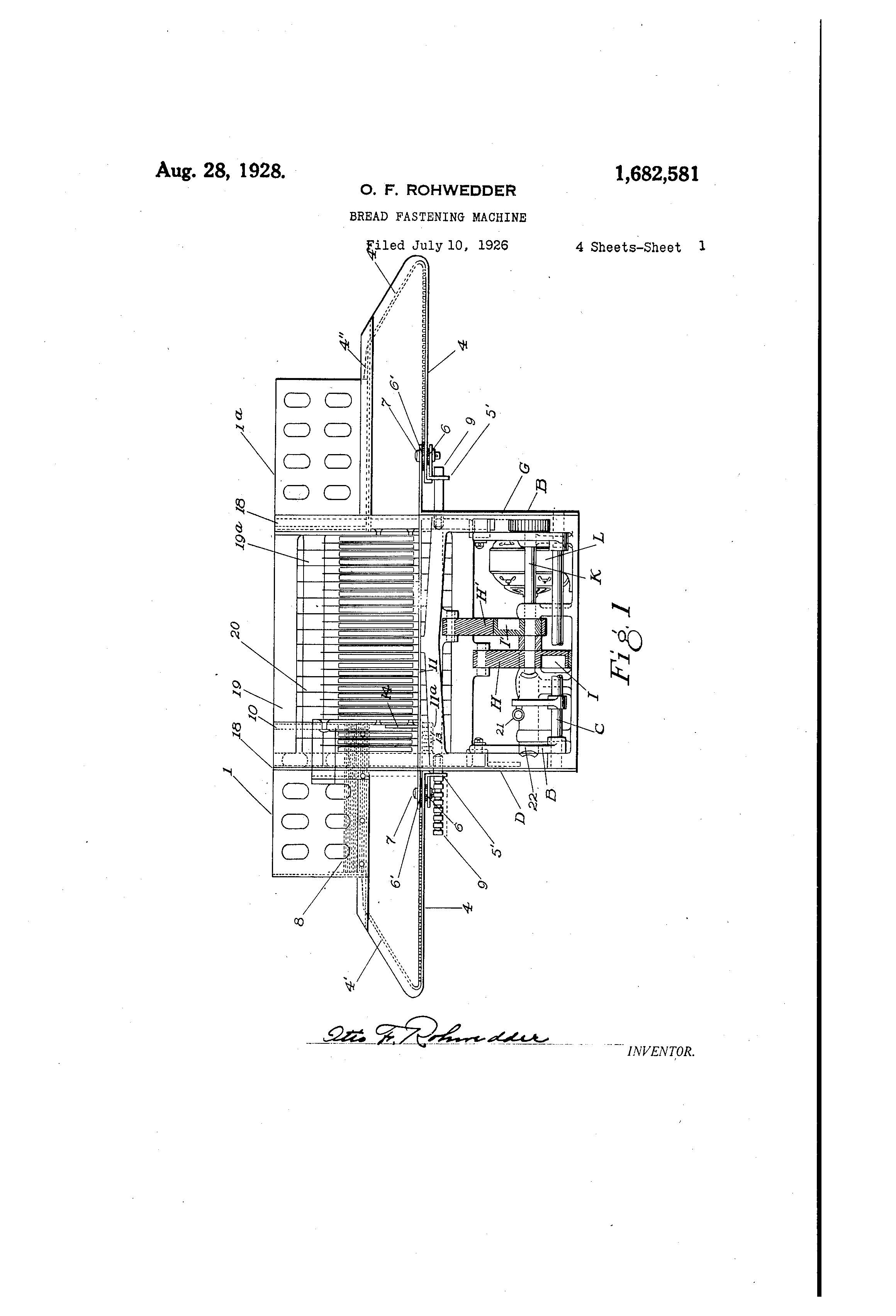On August 28, 1928, Iowa native, Otto Frederick Rohwedder was granted U.S. Patent No. 1,682,581 for his “Bread Fastening Machine.”
Rohwedder’s began his work on the invention more than a decade earlier in Chillicothe, Missouri. After many years of setbacks, challenges, and hard work, the “Bread Fastening Machine” would become the first automatic commercial bread slicer that could also package loaves into a sealed bag. Many have heard the phrase “the best thing since sliced bread,” which can only mean that sliced bread is the epitome of great inventions. 
Early life
Rohwedder was born in Davenport, Iowa in 1880. He graduated with a degree in optics and started his career as a jeweler, eventually owning three jewelry stores. He enjoyed tinkering with watches and other gadgets in his spare time, and some believe this, in addition to his knowledge of consumer habits, led him to create the bread slicer. At one point, Rohwedder surveyed more than 30,000 people, finding that consumers collectively disliked the mess and inconvenience that came with slicing their own bread.
The first prototype
In 1916, Rohwedder sold all three of his jewelry stores and began to work on a bread slicer prototype. The three main objectives for the machine were to
- “provide an appliance which could be used in combination with a bread slicing machine that would secure together the slices of bread when cut.”
- “hold each end of the loaf and permit slices at the middle section of the loaf to be taken out so that the remaining portions of the loaf can then be placed in juxtaposition”
- “provide means for preventing the drying out of the loaf of bread when cut by retaining one or both ends or crusts in their original position and avoiding the exposure of the cut surface of the loaf to the air.”
Selling the bread slicer
In 1927, Rohwedder finished the machine and sold the first one to his friend and baker, Frank Bench. Sales of the machine were not high at first because many believed sliced bread became stale faster. Rohwedder persisted and continued to make improvements to the invention. Eventually, people came to appreciate the ease of pre-sliced bread, and by 1928, word spread and sales increased dramatically.
From 1927 to 1936, Rohwedder obtained seven more patents relating to methods of slicing bread and eventually sold his patent rights to Iowa company, Bettendorf.
